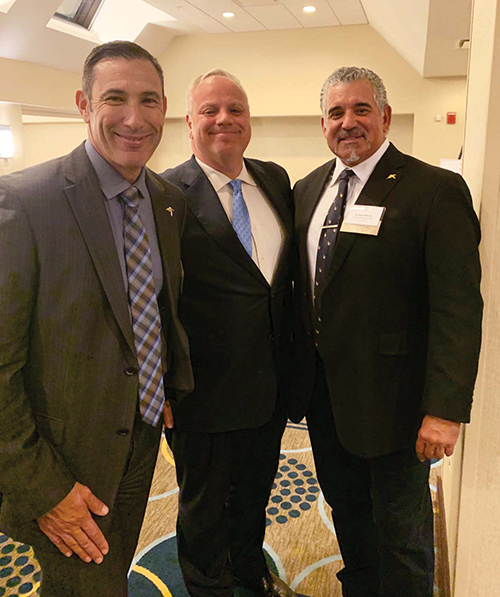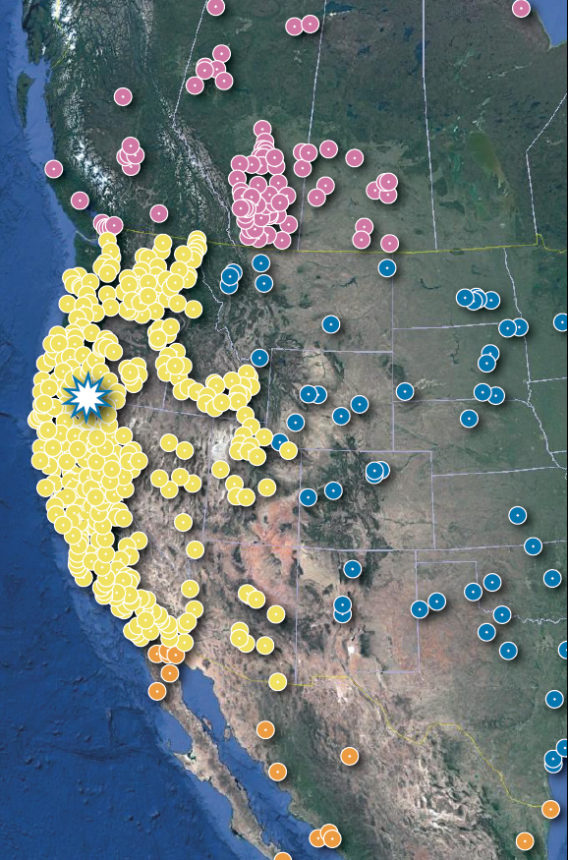
Nov 24, 2019
Chair's Message: Unwavering mission - fix Klamath now
Originally published in the Winter 2019 issue of California Waterfowl.
by ROCQUE MERLO, CHAIRMAN
My first message to you as the newly elected chairman of the California Waterfowl board of directors needs to be extremely blunt: The Lower Klamath National Wildlife Refuge is in extreme crisis, and if we don’t fix it now, we are dooming duck populations to declining numbers.

Since 1949, ducks and geese that were banded at the Lower Klamath National Wildlife Refuge have been found in all these locations. See complete map here.
Lower Klamath, the nation’s first national wildlife refuge for waterfowl, is vital to birds in the Pacific Flyway. Vast numbers of ducks and geese use this refuge, located on the California-Oregon border, for nesting, rearing their broods, molting out of reach of predators and staging for their migrations north and south. These are birds that end up all over our state come duck season, and Lower Klamath is a major source of the state’s mallards.
Or at least those birds have used Lower Klamath in the past, when the refuge had water. Population counts have been plummeting over the past two decades as water supplies have been shifted away, primarily due to an unsuccessful attempt to save three species of endangered fish: coho salmon, Lost River suckers and shortnose suckers.
Don’t get me wrong: We don’t want the endangered fish to go extinct. But effectively draining a huge and historically important wetland without accomplishing anything for the fish is not the answer.
This is a complex issue, and CWA has been fighting on behalf of the refuge for years. But our staff and board have redoubled our commitment to the refuge this year, and Lower Klamath will be the No. 1, No. 2 and No. 3 focus of my two years as chairman.
I’ve already invested personal time and money to advance the cause, joining Mark Hennelly, CWA’s vice president for legislative affairs and public policy, in meetings with members of Congress, top-ranking officials at the U.S. Fish and Wildlife Service and Bureau of Reclamation and even the Secretary of the Interior.

CWA Vice President for Legislative Affairs and Public Policy Mark Hennelly (left) and Board Chair Rocque Merlo (right) met with Interior Secretary David Bernhardt (center) in July and September.
Time and time again, meetings that were supposed to last 15 to 30 minutes stretched out to an hour or more as decision-makers asked more and more questions of Mark and me to learn about this issue. Meetings like these might not seem important, but they're among the most powerful tools we have in this fight because they create direct engagement and build relationships. In fact, when our staff was asked to prioritize their efforts on behalf of Klamath, they told us one of the most important investments we can make on behalf of the refuge is increasing our efforts in Washington, D.C. We already use the services of a lobbying firm there, Natural Resource Results, but we need to do more.
This fall, we scored a temporary victory on the ground: Farmers took stock of their water supplies, saw they had a surplus and started sending water to the refuge. As a result, opening day of duck season there looked wetter than it did last year and ponds are continuing to fill up as I write. While the decision was made by farmers, what paved the way for it was efforts by Jeff Volberg, our director of water law and policy, to educate all the water users in the region about what’s happening to the refuge.
But here’s the thing: We can’t become complacent just because there were more wet places to hunt at Lower Klamath this fall. We can’t rest until there’s a reliable source of water for breeding and rearing ducklings in the spring and summer, molting in late summer and staging in early fall. And I’m telling you this: The staff and board of CWA won’t rest until this problem is solved.
Get educated. We have a web page devoted to Lower Klamath, complete with an archive of detailed articles.
Donate to CWA. You can donate by credit card online here.
Be heard. Subscribe to action alerts here, and we’ll let you know when we need people to contact their lawmakers.


